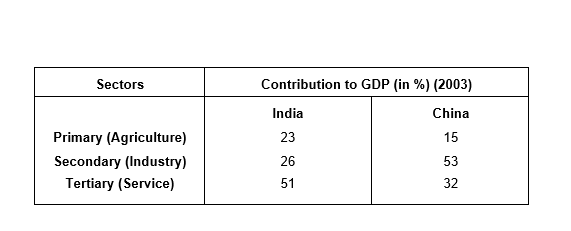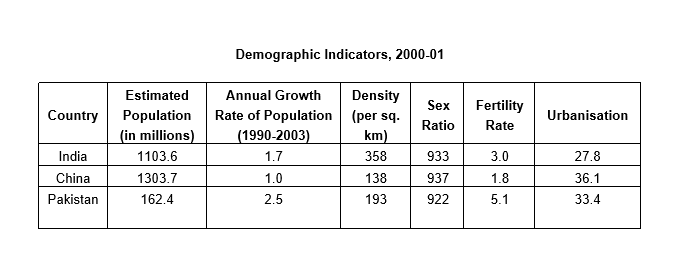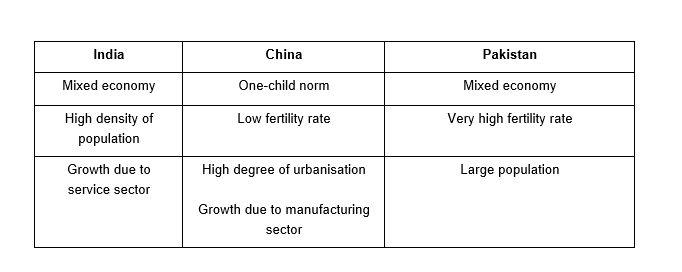
NCERT Solutions for Class 11 Economics Chapter 10 2021: NCERT Solutions is regarded as a very useful resource for students studying for the CBSE Class 11 Economics examinations. This research tool has a wealth of information, and the Solutions compiled by subject matter experts are no exception. NCERT Solution For Class 11 Economics Chapter 10 – Comparative Development Experiences Of India And Its Neighbors is a quick introduction to the idea.
NCERT Solutions for Class 11 Economics Chapter 10 PDF
Class 11 Economics NCERT Solutions Chapter 10
Students will have little trouble grasping the ideas. Students may quickly understand and clarify all of their questions in a practical setting. You may download the NCERT Solutions for Class 11 Economics in PDF format to better grasp the solutions and improve your economic abilities. Both online and offline versions of the PDF are accessible.
Download NCERT Solutions for Class 11 Economics Chapter 10 PDF
NCERT Solutions for Class 11 Economics Chapter 10 | Important Topics
This chapter covers the following topics:
- Introduction
- A glimpse of the developmental route
- Indicators of demographic change
- Sectors and gross domestic product
- Human development indicators
- Strategies for growth
- conclusion
NCERT answers for class 11 Economics chapter 10 include a variety of instructive examples to aid students in understanding and learning. The examples above are from the CBSE syllabus for class 11.
Access NCERT Solution For Class 11 Economics Chapter 10
Questions for NCERT Economics Solutions Class 11 Chapter 10
1. Why are regional and economic groupings formed?
Regional and economic groupings were formed by countries to understand the development strategies and growth measures that are used by the other member countries. This helped countries to analyze the strength and weakness they possessed and the corrective measures that need to be taken for bringing in growth and prosperity. Forming a regional group also makes countries maintain peace among themselves and having a common platform for trade as well as a representation on world forum.
2. What are the various means by which countries are trying to strengthen their own domestic economies?
Following means by which countries are trying to strengthen own domestic economy are:
1. By forming regional and economic groupings like European Union (EU), SAARC, ASEAN, OPEC, and G-8 etc.
2. By analysing the development model and strategies adopted by member countries in order to boost economy of the country.
3. By liberalising the economies which reduces government intervention in economic activities, the economy is governed by demand and supply of the market.
4. By opening their economy to world which is known as globalization. It is a move to provide scope of business in international market for domestic products.
3. What similar developmental strategies have India and Pakistan followed for their respective developmental paths?
The following developmental strategies were followed by India and Pakistan:
1. Developmental programmes adopted by both the countries was based on economic planning.
2. For growth and development public sector was selected as the medium of choice.
3. A mixed economic structure was followed by both countries which involved public and private sector participation.
4. Economic reforms were introduced at the same time to strengthen their respective economies.
4. Explain the Great Leap Forward campaign of China as initiated in 1958.
Great Leap Forward was a campaign started by communist leader Mao Zedong in 1958. It had the following objectives:
1. To initiate industrialisation of the economy in urban as well as rural areas.
2. Motivating people to setup industries in backyard
3. Engaging rural people in collective farming under the Commune System.
5. China’s rapid industrial growth can be traced back to its reforms in 1978. Do you agree? Elucidate.
Rapid industrial growth of China is attributed to the economic reforms that were introduced in phases since 1978. The first phase started with developments made in agriculture, investment and foreign trade. For agriculture commune system was introduced in which small plots were allocated to individual households. Income generated from the land can be kept by the households after paying the tax to government. The next phase of reforms started with the industrial sector where private firms were encouraged to compete with government owned enterprises. A system of dual pricing was introduced in which farmers and industries need to buy and sell a fixed quantity of inputs and outputs at government fixed price and trade remaining quantities at market price. Also introduced were Special economic zones that were designed to attract foreign investment.
6. Describe the path of developmental initiatives taken by Pakistan for its economic development.
Following initiatives were taken by Pakistan for its economic development:
1. Adopted the mixed economy model where both public and private sectors exist.
2. Introduced regulatory frameworks during 1950’s-60’s where domestically produced goods were used as substitute for imports, which helped develop domestic industries.
3. Mechanization of agriculture to bring about Green Revolution leading to production of food grains.
4. Capital goods industries were nationalized in 1970’s.
5. The important thrust areas were denationalized which encouraged private sector participation.
7. What is the important implication of the ‘one child norm’ in China?
Important implication of one child norm led to low population growth and decline in sex ratio in China. It meant lower proportion of females per thousand males.
8. Mention the salient demographic indicators of China, Pakistan and India.
The important demographic indicators are shown below:
Source: NCERT Book Chapter- 10, Pg- 185
The demographic indicators can be explained as follows:
1. Population: China has the highest population followed by India. Pakistan has the least population among the three.
2. Annual Growth Rate of Population: The annual growth rate of Chinese population is 1% while India and Pakistan both have better growth rates of 1.7% and 2.5% respectively
3. Population Density: China has highest population and also is significantly larger in surface area than India and Pakistan, still has the lowest population density. It indicates low pressure on food reserves and natural resources. Good for sustainable development.
4. Sex Ratio: It is the ratio of females per 1000 males. As per the data China has a slightly higher sex ratio than India and Pakistan.
5. Fertility Rate: Fertility rate of China is lowest among the three countries and is a plus point. Higher fertility rate will be causative factor for population explosion.
6. Urbanisation: China is more urbanized than India and Pakistan. High rate of urbanisation depicts better quality of living. It also tells about economic stability and the development of service sector/tertiary sector in China.
9. Compare and contrast India and China’s sectoral contribution towards GDP in 2003. What does it indicate?
The tabular data shown below reflects India and China’s sectoral contribution towards their GDP:

1. Primary Sectors’ contribution to GDP: Primary sector or the agriculture contributes about 23% to GDP of India while 15% of GDP of China. This shows that Indian economy is still agrarian based.
2. Secondary Sector contribution to GDP: This data shows that industries contribute around 26% of GDP of India while it is 53% of GDP of China. This shows that China has a robust industrial system which contributes most towards GDP.
3. Tertiary Sector contribution to GDP: Tertiary or service sector contributes 51% of GDP of India while it is 32% of China’s GDP. This statistic shows the dominance of India on being a service powerhouse.
Therefore, the sectoral contribution studies show the following information:
1. India and China has moved from primary sector and are looking to earn revenue from the other two sectors.
2. India is relying more on tertiary sector while China is going strong on secondary sector to fuel its growth.
10. Mention the various indicators of human development.
Following are indicators of human development:
1. GDP per Capita
2. Life Expectancy
3. Infant Mortality Rate
4. Adult Literacy Rate
5. Percentage of population below poverty line
6. Percentage of population having access to improved water resources
7. Percentage of population having access to improved sanitation
11. Define liberty indicator. Give some examples of liberty indicators.
Liberty indicators are those indicators that represent the extent of civil and political freedom that is made available to individuals of a country. It is an index that measures the people’s participation in decision making. Some examples are: 1. The extent of constitutional protection of independence of Judiciary and the Rule of Law. 2. Extent of constitutional protection given to rights of citizen
12. Evaluate the various factors that led to the rapid growth in economic development in China.
The following factors led to the rapid growth in economic development of China:
1. Agriculture was given impetus and under the commune system of farming small lands were given to separate households for farming. The households can keep profit after paying the taxes to government.
2. Industrial sector was given emphasis in which private firms were encouraged to compete with government enterprises.
3. Setting up of SEZ to attract foreign investment and encourage exports.
4. Dual pricing was implemented under which fix amount of purchases and sale need to be made, the rest will be traded at market price.
13. Group the following features pertaining to the economies of India, China and Pakistan under three heads
- One-child norm
- Low fertility rate
- High degree of urbanisation
- Mixed economy
- Very high fertility rate
- Large population
- High density of population
- Growth due to manufacturing sector
- Growth due to service sector
The features can be represented as:
14. Give reasons for the slow growth and re-emergence of poverty in Pakistan
Following are the reasons for slow growth and re-emergence of poverty in Pakistan:
1. Pakistan was greatly dependent on public sector enterprises for economic growth. The operational inefficiencies of public sector enterprises and allocating scarce resources to such enterprises resulted in slow economic growth.
2. Agricultural practices that were in practice in Pakistan were traditional and outdated which resulted in low crop production.
3. There was lack of manufacturing sector in Pakistan hence they were experiencing slow growth
4. Pakistan was under debt by taking foreign loans and was finding it difficult to repay the loans that slowed down the growth of nation.
5. Political stability was lacking in Pakistan as a result of which there was huge public expenditure to maintain stability. Loan burden stunted the growth plans.
6. Pakistan failed to bring in adequate foreign investment which was the result of political instability and lacking a proper infrastructure.
15. Compare and contrast the development of India, China and Pakistan with respect to some salient human development indicators.
Following are indicators of human development:
1. GDP per Capita
2. Life Expectancy
3. Infant Mortality Rate
4. Adult Literacy Rate
5. Percentage of population below poverty line
6. Percentage of population having access to improved water resources
7. Percentage of population having access to improved sanitation
Human Development was constructed to calculate development of human in form of food, shelter, education and health. A high HDI shows full spectrum growth of individual and country. China is ranked 81st, India128th and Pakistan stood at 136th. China has a better GDP due to its high GDP per capita. Also population control has prevented population from expanding. Due to all the above factors, GDP has increased.
16. Comment on the growth rate trends witnessed in China and India in the last two decades.
India during the last two decades performed average on economic front. Majority of people still prefer agriculture and lack of infrastructure in many parts of country is not helping in the growth. Standard of living hasn’t improved in about one-fourth of the population.
China, on the other hand is lacking political freedom and this is a cause of concern. But, the country has been successful in raising level of growth along with opportunities. Social security is ensured by the system of collective farming which is famous as Commune System. The intervention of public in decisions of social infrastructure before economic reforms were introduced has helped register positive results for the economy.
17. Fill in the blanks
(a) First Five Year Plan of ________________ commenced in the year 1956. (Pakistan/China)
(b) Maternal mortality rate is high in _____________. (China/Pakistan)
(c) Proportion of people below poverty line is more in __________. (India/Pakistan)
(d) Reforms in ______________ were introduced in 1978. (China/Pakistan)
(a) Pakistan
(b) Pakistan
(c) India
(d) China
Access Other Chapters NCERT Solutions for Class 11 Economics–
For additional Chapters, you may get the PDF of NCERT Solutions Class 11 Economics:
All the best to the students appearing for the Class 11th board exam. Here is the detailed blog of NCERT Solutions for Class 11 Economics Chapter 10. For further queries regarding the CBSE Class 11th exam, you can ask in the comment box.
FAQs on NCERT Solutions for Class 11 Economics Chapter 10
What are the reasons for the formation of regional and economic groups?
Countries created regional and economic groups to better understand the development methods and growth measurements employed by their peers. This aided countries in determining their strengths and weaknesses, as well as the remedial actions that must be implemented in order to achieve growth and prosperity. Forming a regional organization also helps countries preserve peace by providing a shared platform for commerce and participation on international forums.
Is it possible to view Chapter 10 while offline?
Yes, you may view Chapter 10 while you’re not connected to the internet.
What does it cost to obtain NCERT Solutions Class 11 Economics Chapter 10 PDF?
It is completely free.
What are the major implications of China’s “one-child policy”?
The one-child policy had a significant impact on China, resulting in sluggish population growth and a decrease in the gender ratio. It indicated that there were fewer females per thousand males.
Where can we get the PDF for NCERT Solutions Class 11 Economics Chapter 10?
It’s available for download at Kopykitab.

